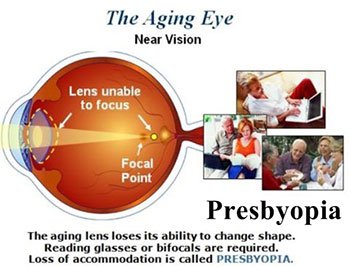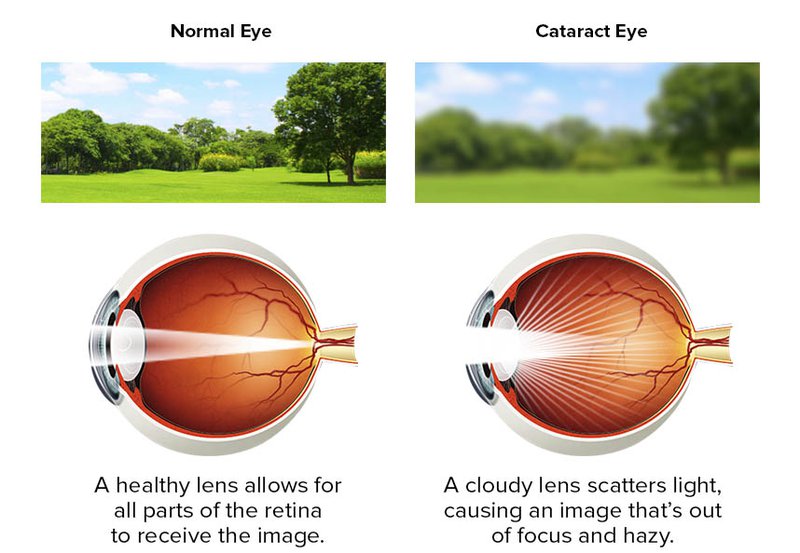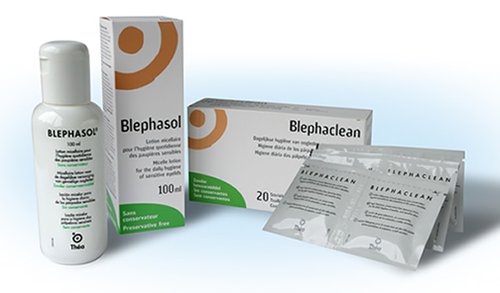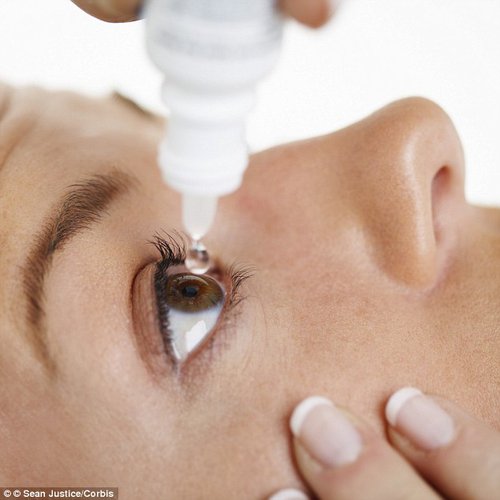Your eyes can indicate signs of more problematic issues to do with your general health like diabetes and high blood pressure. Symptoms of these conditions are not always obvious, so regular eye tests are an essential part of maintaining your health.
Presbyopia
Presbyopia is a condition associated with ageing of the eye that results in progressively worsening ability to focus clearly on close objects. Symptoms include difficulty reading small print, having to hold reading material farther away, headaches and eye strain. Different people will have different degrees of problems.

Treatment is typically with glasses. The eyeglasses used have higher focussing power in the lower portion of the lens. Off the shelf reading glasses may be sufficient for some.
People over 40 are at risk for developing presbyopia and all people become affected to some degree
Caratact
A cataract is a clouding of the lens in the eye which leads to a decrease in vision Cataracts often develop slowly and can affect one or both eyes. Symptoms may include faded colours, blurry vision, halos around light, trouble with bright lights, and trouble seeing at night. This may result in trouble driving, reading, or recognizing faces. Poor vision caused by cataracts may also result in an increased risk of falling.

Cataracts are most commonly due to ageing but may also occur due to trauma or radiation exposure, be present from birth, or occur following eye surgery for other problems. Risk factors include diabetes smoking tobacco, prolonged exposure to sunlight, and alcohol.
Prevention includes wearing sunglasses and not smoking. Early on the symptoms may be improved with glasses. If this does not help, surgery to remove the cloudy lens and replace it with an artificial lens is the only effective treatment.
Blepharitis
Blepharitis is a common eye condition characterized by inflammation of the eyelid, resulting in inflamed, irritated, itchy, and reddened eyelids. A number of diseases and conditions can lead to blepharitis. It can be caused by the oil glands at the base of the eyelashes becoming clogged, a bacterial infection, allergies or other conditions. The severity and course can vary. Onset and resolution can be acute, resolving without treatment within 2–4 weeks (this can be greatly reduced with lid hygiene), but often blepharitis is a long-standing chronic inflammation of varying severity.
 There is no cure for blepharitis, but establishing a daily eyelid-cleaning routine can help control the symptoms and any dryness can be treated with artificial teardrops. Lid cleaning often needs to be continued indefinitely to prevent recurrence. More severe cases of blepharitis may require treatment with antibiotic ointment applied to the eyelids or, antibiotic drops for the eyes and, in a few cases, steroid eye drops.
There is no cure for blepharitis, but establishing a daily eyelid-cleaning routine can help control the symptoms and any dryness can be treated with artificial teardrops. Lid cleaning often needs to be continued indefinitely to prevent recurrence. More severe cases of blepharitis may require treatment with antibiotic ointment applied to the eyelids or, antibiotic drops for the eyes and, in a few cases, steroid eye drops.
Dry eye syndrome
Dry eye syndrome, or dry eye disease, is a common condition that occurs when the eyes don't make enough tears, or the tears evaporate too quickly. This leads to the eyes drying out and becoming red, swollen and irritated.
Symptoms usually affect both eyes and often include:
- feelings of dryness, grittiness or soreness that get worse throughout the day
- burning and red eyes
- eyelids that stick together when you wake up
- temporarily blurred vision, which usually improves when you blink
 Dry eye syndrome isn't usually a serious condition. Treatments are available to help relieve the symptoms, which include:
Dry eye syndrome isn't usually a serious condition. Treatments are available to help relieve the symptoms, which include:
- eye drops to lubricate the eyes
- medications to reduce any inflammation
- if necessary, surgery to prevent tears from draining away easily
